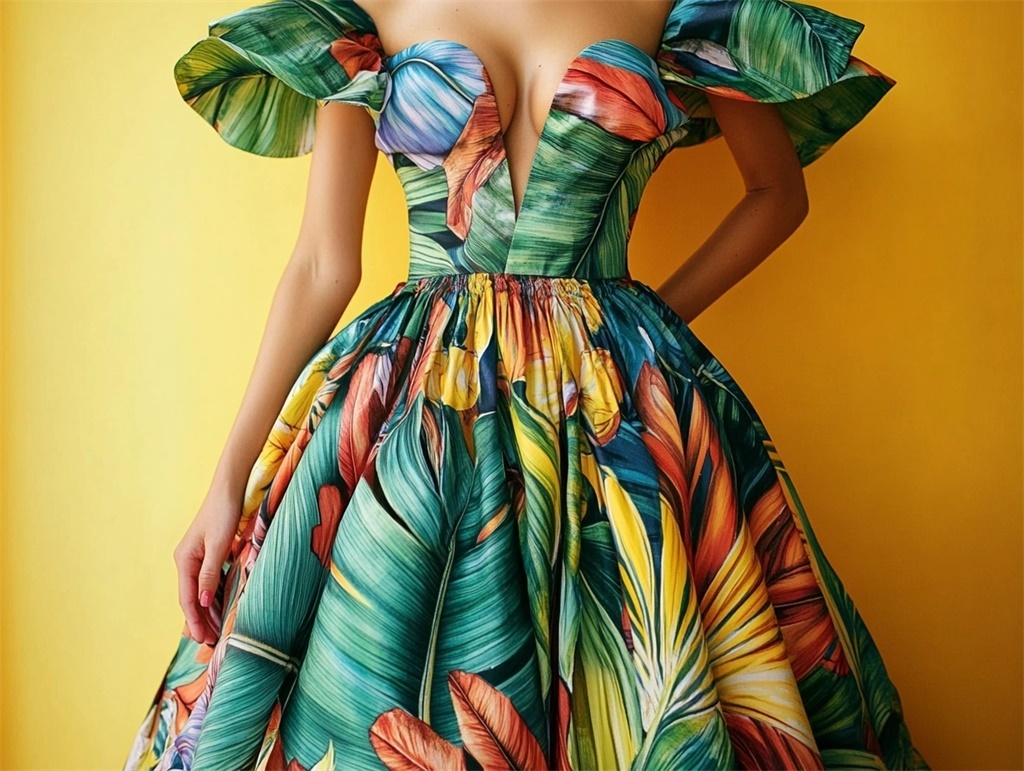引言
自Z时代渐渐成为世界的主流,个性化和独特性也渐渐成为了消费者追求的核心。对于我们POD(Print on Demand)服装卖家而言,在把握消费者的需求之外,熟练的掌握一些基本的设计技能不仅能够帮助他们更好地表达创意,还能显著提高产品的吸引力和销售量。然而,许多新手POD卖家因为专业知识的缺乏,在面对设计时感到迷茫,不知从何入手。本文将深入探讨POD服装设计的关键技巧,带你一步步走向专业设计之路。

设计灵感的源泉
- 观察日常:生活中的每一个细节都可能成为设计的灵感来源。无论是街头的一抹色彩还是自然界中的一片叶子,都可以激发你的创作灵感。
- 文化融合:不同文化的碰撞往往能产生意想不到的效果。尝试将不同地域的文化元素融入设计中,可以让你的作品更加丰富多元。
简单的服装设计是POD服装卖家需要掌控的技能之一
在POD服装设计领域,越专业,越受买家信任。以下是几个关键的设计技巧,帮助你从零开始逐步掌握这些技能。
流行趋势研究
- 紧跟潮流:定期浏览时尚杂志、潮流资讯网站以及专业的趋势分析网站如WGSN,了解最新的流行趋势,如条纹、运动元素等。
- 积累素材:随手记录下日常生活中的灵感瞬间,这些零碎的素材可能是未来设计的宝贵资源。
初步调研
- 视觉收集:利用Pinterest和素材网站收集视觉图像,即使是无目的的浏览也能激发新的想法。
- 广泛探索:保持开放心态,多探索不同的元素,这有助于确定设计的主题方向。
- 沉浸体验:阅读艺术、音乐、摄影书籍,参观博物馆,感受不同的氛围,可以为设计提供更多灵感。
设计图的绘制表达
- 平面结构图:绘制清晰的平面结构图,明确服装各部位的构造线和裁剪要点。
- 比例准确:确保图纸整齐、比例准确,用单色线勾勒出流畅的线条。
- 布料选择:在设计图中标注所选布料类型,确保设计的可实现性。
色彩运用
- 色彩搭配原则:掌握冷暖调子的平衡,理解色彩对不同场合的影响。
- 年度趋势色:学习色彩理论,关注Pantone发布的年度色彩趋势。
图案设计
- 多样性:理解服装纹样的多样性,如动物纹、花卉纹等。
- 表现工艺:考虑图案的表现工艺,如数码印花、拼贴、烫钻等。
- 兼容性:注意图案与面料的兼容性,选择合适的材料。
版型结构:
- 版型对服装的视觉效果至关重要。
- 学习基本的版型设计,如衬衫、T恤的尺寸、领口、胸围等的精确控制。
- 良好的版型能提升服装的市场接受度。
面料选择:
- 深入了解面料的特性,如含涤量、弹性、光滑度等。
- 实地接触面料市场,感受面料的手感和成分。
- 观察大牌的面料使用,总结不同面料的适用场景。
设计手法:
- 重复:相同或相近形态的反复出现,形成群体气势。
- 层次:通过多层面料的叠压增加三维空间感,提升表现力。
- 其他手法:如缠绕、翻折、披挂、分割、抽缩、附加、装饰、系结等,每种手法都能创造出独特的视觉效果。
灵感来源的扩展:
- 不仅限于时尚界,还可以从艺术、建筑、自然等多领域汲取灵感。
- 保持好奇心,不断探索新的材料、工艺和设计思路。
实践与反馈:
- 多加练习,不断尝试新的设计方法和更多的设计作品。
- 从反馈中学习,了解市场和消费者的需求。
- 有条件的还可以参加设计比赛、展览,获取专业意见和建议。
结论
通过上述技巧的学习与实践,我们POD服装卖家不仅可以更好地表达自己的创意,还能确保作品的实用性和商业价值。但要记住的是,设计是一个不断学习和进步的过程,保持好奇心,勇于尝试,最终你会成为一名优秀的POD服装卖家或者专业的POD设计师。
常见问题解答
1. 什么是POD服装?
- POD服装指的是按需打印的服装,即只有在客户下单后才会进行生产和打印的一种模式。
2. 如何获取设计灵感?
- 可以从日常生活、自然、文化等多个方面寻找灵感,同时多浏览时尚杂志和潮流资讯网站。
3. 设计图的绘制需要注意什么?
- 绘制设计图时要确保比例准确,线条流畅,并标明所选布料类型。
4. 色彩搭配的原则有哪些?
- 要掌握冷暖调子的平衡,理解色彩对不同场合的影响,并关注年度色彩趋势。
5. 如何选择合适的面料?
- 了解面料的特性,如含涤量、弹性、光滑度等,并实地接触面料市场,感受其手感和成分。

